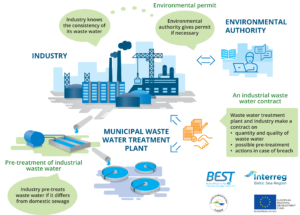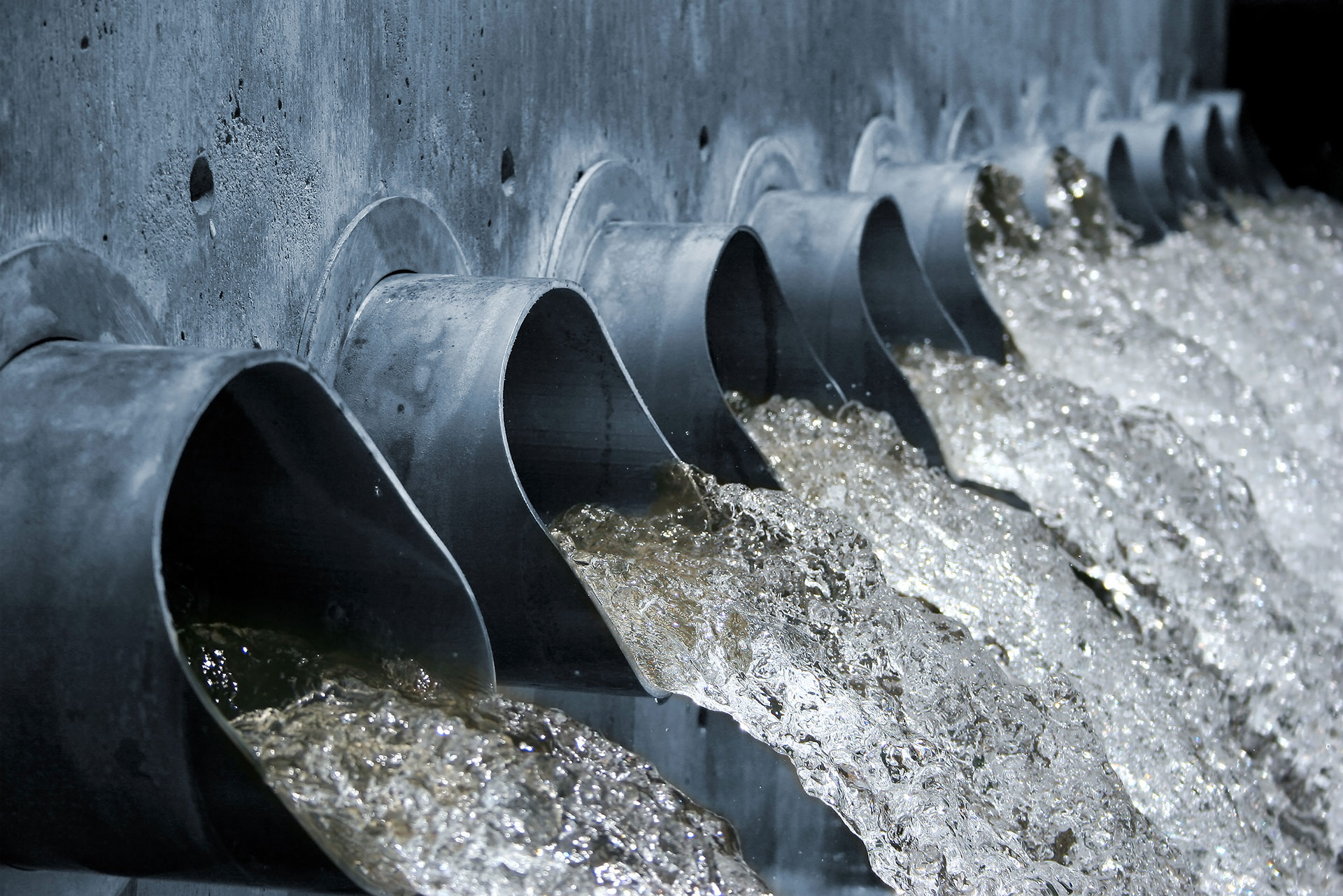Industrial Waste Water Treatment-- Sustainable Solutions for Industrial Water Management
Wiki Article
Developments and Advances in Hazardous Waste Water Treatment Technologies
The landscape of commercial wastewater treatment is undertaking a transformative shift, driven by innovations that improve both efficiency and sustainability. Arising modern technologies, such as membrane bioreactors and microbial gas cells, are redefining pollutant elimination processes while adding to energy generation. Source healing methods are acquiring traction, aligning with round economy principles. As governing criteria advance, the integration of AI and equipment learning right into wastewater monitoring systems promises to enhance procedures and ensure compliance. However, the full effects of these advancements raise important inquiries about their scalability and long-term effect on sector practices.Summary of Waste Water Treatment Technologies
Wastewater treatment modern technologies incorporate a variety of techniques developed to remove contaminants from commercial effluents prior to their launch right into the environment. These technologies are critical for keeping environmental balance and ensuring conformity with ecological guidelines. The main categories of wastewater therapy consist of physical, chemical, and biological approaches, each offering distinct objectives based on the nature of the contaminants existing.

Biological therapy approaches use microorganisms to break down natural issue, making them particularly effective for organic-rich effluents. Methods like triggered sludge and biofilm activators harness the natural deterioration capacities of microorganisms, leading to significant reductions in biochemical oxygen demand (BODY)
Advanced Filtering Methods
Advanced filtering strategies stand for a vital development in the realm of industrial wastewater treatment, improving the effectiveness of pollutant removal processes. Industrial Waste Water Treatment. These methods encompass a series of technologies, including microfiltration, ultrafiltration, nanofiltration, and reverse osmosis, which provide sequential obstacles for numerous fragment dimensions and chemical structuresMicrofiltration and ultrafiltration use membrane systems to remove suspended solids, germs, and larger natural molecules, boosting the top quality of effluent previous to additional treatment. Nanofiltration bridges the gap between ultrafiltration and reverse osmosis, effectively removing organic compounds and divalent ions, hence lowering the lots on downstream processes.
Reverse osmosis uses the highest degree of purification by permitting just water and small particles to pass via its semi-permeable membranes, making it optimal for reclaiming high-quality water from commercial effluents. Current innovations in membrane technology, consisting of the advancement of more sturdy and fouling-resistant materials, have actually considerably boosted functional effectiveness and reduced prices.
Integrating these advanced filtering techniques not just enhances the total treatment procedure but likewise contributes to sustainability initiatives by enabling water reuse and source recovery in industrial setups. (Industrial Waste Water Treatment)
Biological Therapy Developments

Furthermore, the growth of engineered organic systems, such as membrane bioreactors (MBRs), combines organic treatment with innovative membrane purification. This assimilation allows for higher effluent high quality and minimized footprint, making it ideal for space-constrained industrial centers. Advancements in genetically crafted microbes have also arised, enhancing the biodegradation of certain contaminants, such as drugs and heavy steels, that are traditionally testing to eliminate.
Furthermore, the execution of bioaugmentation methods, where advantageous germs are introduced to improve the existing organic treatment processes, has actually shown appealing outcomes in improving therapy performance. These advancements jointly signify a pattern in the direction of more sustainable and effective biological therapy methodologies that can adjust to the advancing complexities of commercial wastewater streams. As industries continue to prioritize ecological conformity, these organic developments will play an essential role in wastewater administration.

Source Recovery Approaches
In industrial setups, the combination of resource recuperation methods has actually ended up being significantly crucial for improving sustainability and reducing waste. These methods concentrate on extracting useful materials and power from wastewater streams, thereby changing potential contaminants right into recyclable sources.One popular strategy is nutrient recuperation, where nitrogen and phosphorus, often existing over in wastewater, are caught and exchanged fertilizers. This not just reduces visit homepage environmental influences but likewise offers a round economic situation solution for agricultural applications. In addition, technologies such as anaerobic digestion permit the conversion of organic waste into biogas, a renewable resource source that can offset nonrenewable fuel source usage in industrial operations.
Moreover, progressed filtration and membrane innovations assist in the recuperation of industrial by-products such as salts and metals. These recuperated products can be rehabilitated right into production procedures, lowering the demand for virgin resources.
Future Trends in Waste Water Administration
As markets progressively focus on sustainability, the future of wastewater monitoring is readied to undertake substantial transformations. Technological developments, such as man-made knowledge and Click This Link equipment understanding, will certainly make it possible for extra reliable surveillance and monitoring of wastewater systems. These modern technologies can forecast upkeep requirements, enhance treatment procedures, and improve decision-making, eventually decreasing operational costs and environmental influence.In addition, the assimilation of round economic climate official website principles will play a crucial role in wastewater monitoring. Industries are anticipated to move towards systems that not just treat wastewater yet additionally recover beneficial sources, such as nutrients, water, and power. This change will reduce waste and promote the reuse of products, straightening with worldwide sustainability goals.
Arising treatment techniques, such as membrane layer bioreactors and progressed oxidation processes, will certainly additionally enhance the performance of wastewater therapy, allowing for higher quality effluents ideal for reuse. Furthermore, regulatory structures are likely to advance, highlighting stricter requirements for wastewater discharge and encouraging sectors to adopt cutting-edge treatment remedies.
Final Thought
In verdict, the evolution of industrial wastewater treatment innovations demonstrates a considerable change towards enhanced effectiveness and sustainability (Industrial Waste Water Treatment). Advancements in innovative purification techniques, biological treatments, and resource recovery methods highlight the market's commitment to environmental stewardship.The landscape of industrial wastewater treatment is undertaking a transformative shift, driven by innovations that enhance both effectiveness and sustainability.Wastewater treatment innovations include a variety of techniques developed to eliminate pollutants from industrial effluents before their release into the atmosphere.Taking advantage of the power of biological processes has led to significant innovations in the treatment of commercial wastewater.In addition, the execution of bioaugmentation methods, where helpful germs are introduced to enhance the existing biological treatment processes, has actually revealed appealing results in improving therapy efficiency. These advancements collectively signify a trend towards more lasting and effective biological therapy methods that can adapt to the evolving intricacies of commercial wastewater streams.
Report this wiki page